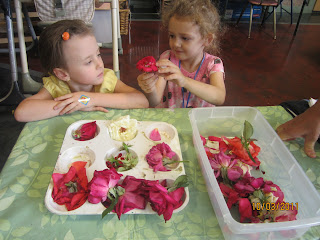We continue to explore the world around us. It is important for children to be able to decipher the difference between living and non-living objects. In the far left jar you can see the avocado plants that we have been working hard to grow. (See the past post on avocado plants to learn more about this ongoing project). Students have discovered, displayed and continue to observe, objects that are both living and non-living.
Students have measured and compared several different plants. We chart the growth of plants and continue to learn about what helps them to grow strong and healthy. We have noticed that our avocado plant growing in the soil is healthier and growing faster than then one in water.
We have sorted, compared and discussed the difference between objects that are living and non-living. Using our five senses we have observed these objects and understand that living things need air, water, food, etc. to continue to grow. We have been very careful to take care of our growing plants at school.
Students learned about the different parts of a flower. These flowers were donated by a student and we loved taking them apart to see the flower structure. Next, student took turns examining them and sorting the petals into groups by color. Here students talked about observable characteristics and worked together to figure out the different groups and placements.
Although there are many Nevada State Preschool Standards addressed throughout these learning opportunities, below are examples from the science core curriculum:
N.PK1.a Observe their world.
N.PK1.b Ask questions about their world.
N.PK.3 Use tools safely to observe and explore different objects/environments.
N.PK.5 Students work in small groups and share ideas with others regarding to science related activities.
E.PK.4 Identify and sort different natural objects(e.g., rocks, soils, etc.).P.PK.1Sort objects according to observable properties (e.g., by shape and color).
P.PK.3 Explore what happens to objects in relation to other forces (e.g., magnets, gravity, and water).
P.PK.4 Investigate how objects react when placed in water.
L.PK.7 Identify and/or sort plants and animals by observable characteristics.
L.PK.8 Observe living and non-living things on Earth.
* REMEMBER YOU CAN SEE ALL NEVADA PRESCHOOL STANDARDS HERE.





No comments:
Post a Comment